History of the Venue
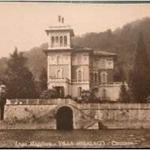
Italian Roots
Both Victoria and Ric trace family roots to Italy. Victoria’s great-great-grandparents emigrated from Tuscany to the United States in the 19th century. Although Victoria’s grandmother never met Ric, we know she would have adored him, in no small part because of his Italian heritage. Ric’s paternal great-grandmother emigrated from the Basilicata region to the United States through Ellis Island in the early 20th century. Ric’s mother, Luisa — the villa’s namesake — was born in Cordenons, Italy, a small town in the Friuli region.
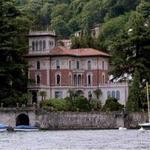
Villa Luisa: History
In 2003, while exploring Stresa, Bob and Luisa (Ric’s parents) first encountered Villa Luisa, then known as Villa Jucker. Built in 1903, the villa showcases the Italian Liberty style, an architectural movement that emerged in Milan at the dawn of the 20th century and represents Italy’s version of Art Nouveau. Captivated by the villa’s beauty and eager to spend more time in Italy, Bob and Luisa purchased the property from the granddaughters of Giovanni Giacomo Jucker, an Italian engineer and art collector. Over the years, the villa has gone by several names, including Villa Maria, Villa Miralago, and Villa Jucker. In honor of his wife, Bob renamed the villa to Villa Luisa.
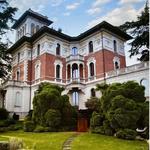
Villa Luisa: Present
Bob and Luisa then embarked on an extensive renovation to modernize the property, incorporating their artistic vision while preserving the villa’s classic charm. For decades, the villa has served as a beloved retreat for the Fernholz family, drawing relatives and family friends from around the world. Villa Luisa has hosted family reunions, holidays, and many memorable summers. Just last summer, Ric and Victoria spent time at the villa before their engagement and had the joy of celebrating Bob and Luisa’s 54th wedding anniversary — adding another cherished memory to Villa Luisa’s history.
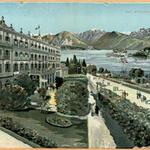
Grand Hotel des Iles Borromées
Since its grand opening in 1863, the Grand Hotel des Iles Borromées has become a cherished landmark, steeped in history. In 1872, one of the hotel’s founders authored a guide book (written in French) for guests. A sign of the times, the guide book proclaimed the hotel possessed the following features: “electricity in all the rooms, modern sanitary facilities and central heating throughout the hotel.” (Fortunately, the hotel still possesses all of these features!)
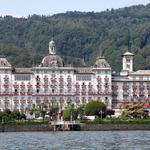
Rise to Prominence
In 1906, the Simplon train tunnel opened, and Stresa became a main stop on the Orient Express’s Grand Tour route, increasing the importance of the hotel. As the hotel gained prominence, it hosted many notable visitors, including royalty, noblemen, and most recently, finance ministers and central bank governors during the 2024 G7 Summit. One can find the following signatures, and many more, in the hotel’s guest book: Princess Margaret of the United Kingdom, King Hussein of Jordan, Prince Ranieri III of Monaco, the Duke and Duchess of Kent, Richard Wagner, Charlie Chaplin, Clark Gable, Sylvester Stallone, George Clooney, Italian politicians like former President Carlo Azeglio Ciampi, and business leaders like Fiat founder Umberto Agnelli.
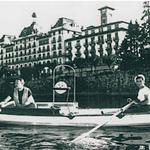
Ernest Hemingway
American writer Ernest Hemingway may just be the hotel’s most beloved guest. As World War I raged in Europe, an 18-year-old Hemingway responded to a plea for ambulance drivers needed at the Italian front. On July 8, 1918, Hemingway tried to deliver chocolates and cigarettes to front line troops, but a mortar exploded nearby and seriously wounded him. Despite the severity of his own wounds, Hemingway managed to carry an Italian soldier to safety, for which he received the Italian Silver Medal of Bravery. Hemingway spent the next six months recovering from his 227 shrapnel wounds at a Milan hospital. During his time in Milan, Hemingway fell in love with a nurse, who he later fictionalized as Catherine Barkley in his novel, "A Farewell to Arms." When Hemingway received a 10-day convalescence, he headed to nearby Stresa and stayed at the Borromées Hotel (specifically in Room 106, which is now known as the “Hemingway Suite”).
"An Old Client"
Taken by the hotel’s beauty, Hemingway ultimately set part of "A Farewell to Arms" at the hotel. He also penned a letter to his parents during his stay, writing: "I'm up here in Stresa, a little resort on Lake Maggiore. One of the most beautiful Italian lakes." In 1948, about twenty years after the publication of "A Farewell to Arms," Hemingway returned to the Borromées Hotel. During that visit, Hemingway rather sweetly signed the hotel’s guest book as simply: “Ernest Hemingway (an old client).” Like Hemingway and many others, we hope you find yourself enchanted by the hotel’s elegance and splendor, a tribute to its treasured legacy.